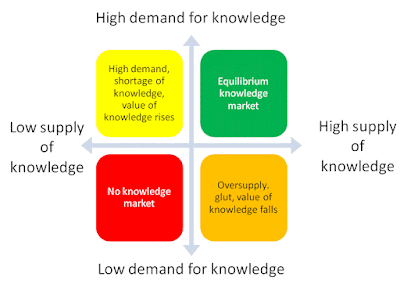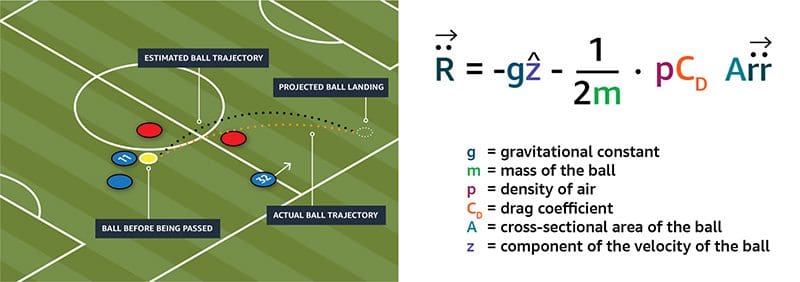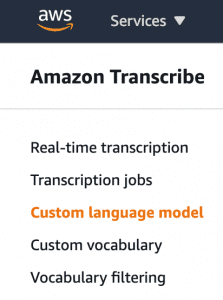Favorite Amazon Transcribe is an automatic speech recognition (ASR) service that makes it easy for developers to add speech to text capabilities to their applications. Since launching in 2017, Amazon Transcribe has added numerous features to enhance its capabilities around converting speech to text. Some of these features include automatic
Read More
 Shared by AWS Machine Learning September 14, 2021
Shared by AWS Machine Learning September 14, 2021
Favorite If we view the flow of knowledge within an organisation as a Market, then we need to address the issues of supply and demand of knowledge within that market. One way to look at the flow of knowledge within an organisation is as a market connecting the suppliers of
Read More
 Shared by Nick Milton September 13, 2021
Shared by Nick Milton September 13, 2021
Favorite This post was authored by Simon Rolfes. Simon played 288 Bundesliga games as a central midfielder, scored 41 goals, and won 26 caps for Germany. Currently, he serves as Sporting Director at Bayer 04 Leverkusen, where he oversees and develops the pro player roster, the scouting department, and the
Read More
 Shared by AWS Machine Learning September 11, 2021
Shared by AWS Machine Learning September 11, 2021
Favorite Amazon Fraud Detector is a fully managed service that makes it easy to identify potentially fraudulent online activities, such as the creation of fake accounts or online payment fraud. Unlike general-purpose machine learning (ML) packages, Amazon Fraud Detector is designed specifically to detect fraud. Amazon Fraud Detector combines your
Read More
 Shared by AWS Machine Learning September 11, 2021
Shared by AWS Machine Learning September 11, 2021
Favorite Amazon Fraud Detector is a fully managed service that makes it easy to identify potentially fraudulent online activities, such as the creation of fake accounts or online payment fraud. Unlike general-purpose machine learning (ML) packages, Amazon Fraud Detector is designed specifically to detect fraud. Amazon Fraud Detector combines your
Read More
 Shared by AWS Machine Learning September 10, 2021
Shared by AWS Machine Learning September 10, 2021
Favorite Amazon S3 plugin for PyTorch is an open-source library which is built to be used with the deep learning framework PyTorch for streaming data from Amazon Simple Storage Service (Amazon S3). With this feature available in PyTorch Deep Learning Containers, you can take advantage of using data from S3
Read More
 Shared by AWS Machine Learning September 8, 2021
Shared by AWS Machine Learning September 8, 2021
Favorite AWS DeepRacer is the fastest way to get rolling with machine learning (ML) through a global racing league, cloud-based 3D racing simulator, and fully autonomous 1/18th scale race car driven by reinforcement learning. Starting today, the model action space is fully customizable yet simplified with new dynamic graphics so
Read More
 Shared by AWS Machine Learning September 8, 2021
Shared by AWS Machine Learning September 8, 2021
Favorite Many universities like transcribing their recorded class lectures and later creating captions out of these transcriptions. Amazon Transcribe is a fully-managed automatic speech recognition service (ASR) that makes it easy to add speech-to-text capabilities to voice-enabled applications. Transcribe assists in increasing accessibility and improving content engagement and learning outcomes
Read More
 Shared by AWS Machine Learning September 8, 2021
Shared by AWS Machine Learning September 8, 2021
Favorite Middle management can form an almost impenetrable layer to knowledge management in many organisations. Image from wikimedia commons The two main stakeholder groupings for KM are the senior managers and the knowledge workers. The value proposition for the senior managers is that KM will deliver greater efficiency, greater effectiveness, faster
Read More
 Shared by Nick Milton September 6, 2021
Shared by Nick Milton September 6, 2021
Favorite You can use various tools to define and run machine learning (ML) pipelines or DAGs (Directed Acyclic Graphs). Some popular options include AWS Step Functions, Apache Airflow, KubeFlow Pipelines (KFP), TensorFlow Extended (TFX), Argo, Luigi, and Amazon SageMaker Pipelines. All these tools help you compose pipelines in various languages
Read More
 Shared by AWS Machine Learning September 4, 2021
Shared by AWS Machine Learning September 4, 2021

![]() Shared by AWS Machine Learning September 14, 2021
Shared by AWS Machine Learning September 14, 2021







